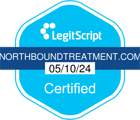Growing up is like finding your way through a tricky maze filled with twists and turns that shape how your body, mind, and emotions develop. In this journey, there are things outside of ourselves, like substances, that can play a big role as we grow. Figuring out how these things, like alcohol, prescription drugs, and others, impact us is important. This engaging guide seeks to shed light on how these substances can affect our overall health.
Navigating the Hazards of Alcohol
Alcohol holds the potential to disrupt the delicate balance of adolescent development. This is the impact of alcohol on overall health:
A. Impact on Adolescent Development
The teenage brain is still undergoing crucial development, making it more susceptible to the effects of alcohol. Alcohol can also interfere with the formation of neural pathways and synaptic connections, potentially affecting cognitive functions.
B. Cognitive Impairment
Excessive alcohol consumption can lead to memory deficits, impacting both short-term and long-term memory. Adolescents may experience difficulties in retaining and recalling information, which can affect their academic performance.
C. Academic Performance
Alcohol use can hinder concentration and focus, directly impacting academic achievements. Poor academic performance may lead to long-term consequences for future educational and career opportunities.
D. Risky Behaviors
Impaired judgment under the influence of alcohol can lead to engaging in risky behaviors such as unprotected sex, reckless driving, or substance abuse. These behaviors may have immediate consequences and long-term risks to the individual’s well-being.
E. Potential for Alcohol Use Disorders
Early exposure to alcohol during adolescence may increase the likelihood of developing alcohol use disorders later in life. Careful monitoring and intervention are essential to prevent the progression of more severe substance-related issues.
The Double-Edged Sword of Adderall
While adderall can be a prescribed medication that can help in the treatment of ADHD, there are ways it can be misused:
A. Prescribed Use
Adderall is a prescription medication intended for the treatment of ADHD, helping individuals focus and manage impulsivity. Proper medical supervision is crucial to ensuring its appropriate use.
B. Consequences of Misuse
Misuse of Adderall, especially in higher doses or without a prescription, can lead to insomnia and other sleep disturbances. Sleep disruption may contribute to cognitive dysfunction and negatively impact overall well-being.
The stimulant properties of Adderall can also cause elevated heart rate and heightened anxiety. Prolonged misuse may exacerbate pre-existing mental health conditions as well, or lead to the development of new ones.
Adderall misuse carries the potential for addiction, as individuals may develop a dependence on the drug to enhance performance. Addiction can have severe consequences for academic, social, and overall functioning.
Sedatives: Calming the Storm or Creating It?
Much like Adderall, sedatives can have a medical use but can also be misused:
A. Prescribed Use for Anxiety and Sleep Disorders
Sedatives are commonly prescribed to alleviate the symptoms of anxiety disorders, providing a sense of calm. Proper diagnosis and monitoring by healthcare professionals are essential to ensure appropriate use.
Sedatives may be prescribed to address sleep disorders by inducing relaxation and promoting restful sleep. Dependence on sedatives for sleep though can lead to unintended consequences.
B. Dangers of Misuse
Misuse of sedatives can lead to excessive drowsiness, affecting cognitive functioning and physical coordination. This can pose risks, especially in situations that require alertness, such as driving or operating machinery.
In extreme cases, misuse of sedatives, especially when combined with other substances like alcohol, can lead to respiratory failure. This highlights the importance of understanding potential interactions and avoiding polydrug use.
C. Awareness and Caregiver Responsibilities
Caregivers should be educated about the potential dangers of sedative misuse among adolescents. Open communication channels between caregivers and adolescents can facilitate early intervention and support.
Methamphetamine: The Impact on the Developing Brain
Methamphetamine can effect the developing brain of an adolescent in the following ways:
A. Severe Risks to Adolescent Development
Methamphetamine is known for its highly addictive properties, increasing the vulnerability of adolescents to substance dependence. The potential for addiction poses a significant threat to ongoing development.
B. Alteration of Brain Structure and Function
Methamphetamine use can lead to memory impairment, affecting both short-term and long-term cognitive functions. Memory deficits may impact academic performance and overall cognitive abilities.
Methamphetamine alters the brain’s ability to make sound judgments as well. Impaired judgment can lead to risky behaviors and potentially harmful decisions.
Finally, the drug’s impact on neurotransmitters can contribute to emotional instability in adolescents. Emotional regulation becomes challenging, affecting social relationships and mental well-being.
C. Long-Term Cognitive Deficits
Prolonged use of methamphetamine can result in long-term cognitive deficits. Adolescents may face challenges in learning and retaining information, hindering academic progress.
Cognitive deficits can affect an adolescent’s ability to make sound decisions, impacting their overall development. Intervention strategies are essential to address and mitigate these long-term effects.
Prescription Drugs: Navigating the Thin Line
Drugs are prescribed in order to provide relief from a disease or symptoms, but there is a thine line to be aware of:
A. Growing Concern in Adolescent Populations
Prescription drugs, such as opioids and benzodiazepines, serve legitimate medical purposes. The challenge lies in preventing their recreational misuse among adolescents.
B. Serious Consequences of Recreational Misuse
Opioid misuse can lead to respiratory depression, a potentially life-threatening condition. Understanding the gravity of opioid misuse is crucial for parents, educators, and healthcare providers.
Misuse of benzodiazepines can lead to sedation, respiratory issues, and dependence. Recognizing the signs of misuse and providing early intervention is essential.
VI. Crack and Cocaine: The Ravages of Stimulants
Crack and cocaine are known to effect adolescent development in the following ways:
A. Potent Stimulants Derived from the Coca Plant
Crack and cocaine use can lead to a rapid elevation of the heart rate and increased blood pressure. These physiological effects pose immediate risks to cardiovascular health.
The short-term pleasure induced by these stimulants contributes to their addictive nature. Understanding the allure and risks is crucial to prevention efforts.
B. High Costs of Use
Crack and cocaine use can lead to severe addiction, with profound consequences for adolescents. Addiction requires comprehensive intervention and support.
Long-term use can also contribute to cardiovascular issues, including heart attacks and strokes. Recognizing the potential for lasting physical damage is crucial for prevention.
Stimulant use can compromise mental health, leading to anxiety, paranoia, and other psychiatric symptoms. Providing mental health resources and support is essential for those struggling with substance abuse.
VII. Inhalants: The Hidden Dangers
When it comes to inhalants, the following dangers are known:
A. Easily Accessible Substances
Glue, paint thinners, and nitrous oxide are examples of inhalants easily accessible to adolescents. The accessibility of these substances poses a significant risk.
B. Harmful Effects of Inhalation
Inhalant use can impair judgment, leading to risky behaviors and decision-making. Adolescents may engage in dangerous activities under the influence.
The inhalation of substances can cause dizziness and disorientation, which contributes to accidents and injuries among adolescents.
In severe cases, inhalant abuse can lead to sudden death. Awareness and prevention efforts are crucial to avoiding tragic outcomes.
VIII. Heroin: The Opioid Menace
When dealing with heroin, beware of the following effect it can have on adolescent development:
A. Potent Opioid Substance
Heroin use poses significant risks to physical and mental health during crucial adolescent development stages. The potency of heroin increases the likelihood of severe consequences.
B. Range of Health Issues
Heroin use can lead to respiratory depression, a life-threatening condition. Heroin use is also associated with an increased risk of infectious diseases, such as HIV and hepatitis. Understanding the immediate risks associated with opioid use is crucial.
The highly addictive nature of heroin increases the risk of substance dependence. Early intervention is critical to preventing the progression of addiction.
C. Early Intervention and Education
Parents, educators, and healthcare professionals can help educate adolescents about identifying signs of heroin use. Use early intervention strategies to address substance abuse issues promptly.
IX. Marijuana: A Controversial Landscape
Marijuana is often considered a gateway drug that may lead to experimentation with more potent substances. Debates surround its potential role in initiating substance use.
A. Concerns Regarding Brain Development
Regular marijuana use during adolescence has been linked to cognitive impairments. The impact it has on memory, attention, and learning may also affect academic performance.
There is an increased risk of mental health disorders, such as anxiety and depression, associated with marijuana use. Adolescents with underlying vulnerabilities may be more susceptible to these as well.
Marijuana use can contribute to academic setbacks due to impaired cognitive functions. Addressing these concerns is vital for educational success.
Strategies for Overcoming Substance Abuse Challenges in Adolescents
Parents, educators, and healthcare professionals play pivotal roles in crafting effective strategies to overcome the challenges posed by substances. Strategies that can be effective for adolescents struggling with substance abuse include the following:
1. Comprehensive Education Programs
Educational initiatives are key to preventing substance abuse among adolescents. Comprehensive programs should not only highlight the dangers of various substances but also delve into the underlying factors that contribute to substance experimentation. These programs can equip adolescents with the knowledge and skills needed to make informed decisions about their health. Education should extend beyond classrooms, involving parents, community members, and peer networks to reinforce consistent messaging.
2. Strengthening Parental Vigilance and Support
Parents play a fundamental role in preventing and addressing substance abuse issues. Strengthening parental vigilance involves being aware of behavioral changes, recognizing signs of substance use, and maintaining open communication with adolescents. Establishing a trusting relationship allows for honest discussions about the risks associated with substance abuse. Parents should also be proactive in seeking professional help if substance abuse is suspected, fostering a supportive environment for recovery.
3. Early Intervention
Identifying signs of substance abuse early is crucial for effective intervention. Schools, healthcare providers, and communities should implement early intervention strategies to address emerging issues promptly. This involves training educators and healthcare professionals to recognize behavioral changes, offering counseling services, and providing resources for adolescents struggling with substance abuse. Early intervention can prevent the escalation of substance use and mitigate potential long-term consequences.
4. Community Outreach and Support Networks
Communities play a vital role in creating a supportive environment for adolescents. Community outreach programs can raise awareness about substance abuse, reduce stigma, and provide resources for affected individuals. Establishing support networks within communities ensures that adolescents have access to assistance when needed. Engaging community leaders, organizations, and local businesses in these efforts enhances the collective responsibility for adolescent well-being.
5. Holistic Mental Health Approach
Substance abuse often coexists with underlying mental health issues. Adopting a holistic mental health approach involves integrating mental health education, counseling services, and support systems into schools and communities. By addressing the root causes of substance abuse, such as anxiety, depression, or trauma, this approach aims to promote overall well-being and resilience in adolescents.
6. Peer Support Programs
Peer influence is a significant factor in adolescent behavior. Implementing peer support programs empowers adolescents to make positive choices and resist peer pressure related to substance use. These programs create a sense of belonging and understanding among peers, fostering an environment where individuals can support each other in making healthy decisions.
7. Accessible Treatment Resources
Ensuring that treatment resources are readily accessible is essential for those seeking help. Removing barriers to treatment, such as reducing stigma, increasing the availability of counseling services, and addressing financial constraints, enhances the likelihood of successful intervention. Collaboration between healthcare providers, community organizations, and government agencies can improve the accessibility of treatment resources.
8. Holistic Health and Wellness Programs
Incorporating holistic health and wellness programs into schools and communities can provide adolescents with alternative outlets for stress relief and personal growth. Yoga, meditation, and mindfulness practices contribute to mental and emotional well-being. These programs not only serve as preventive measures but also encourage a positive lifestyle centered around self-care. It’s time to replace judgment with empathy and condemnation with support, allowing those in recovery to redefine their lives beyond their past struggles.
The journey to sobriety can be difficult, but you’re not alone. The team at the Northbound Addiction Treatment Center in Newport Beach can help you or your loved ones with the journey. Contact us for any further queries.
Author
-

President, CEO & Founder at Northbound Treatment Network
Paul Alexander is the CEO, President & Founder of Northbound Treatment Network in Newport Beach, California. He believes wholeheartedly in transformational leadership, organizational health and effective, fully integrated substance use disorder and mental health treatment. With over 27 years of experience in behavioral healthcare, Paul has extensive knowledge of “in vivo” treatment modalities, clinical development, operations, strategy, marketing and financial planning. He has been widely recognized for his development of collegiate-based residential treatment programs for students in recovery and authored a research study at The University of California confirming this modality’s effectiveness.
Paul’s comprehensive professional experience, willingness to innovate, and emphasis on organizational health are vital factors in Northbound’s continued success. Paul received his Certified Addiction Treatment Specialist training at Saddleback College in Mission Viejo, CA, and was awarded Outstanding Alumni Service Award in 2002. Paul holds a Bachelor of Arts degree in Criminology, Law and Society, Summa Cum Laude, from University of California, Irvine, and a Juris Doctorate degree from Loyola Law School of Los Angeles. Paul currently serves on The National Association of Addiction Treatment Providers (NAATP) board. In addition, he serves on The Family Recovery Foundation board and The CarePossible board in Orange County; both organizations are committed to raising funds for family recovery and treatment for former military personnel. Paul is in recovery himself and lives in Orange County with his wife Silvana and his two young sons, Noah and Dean.










